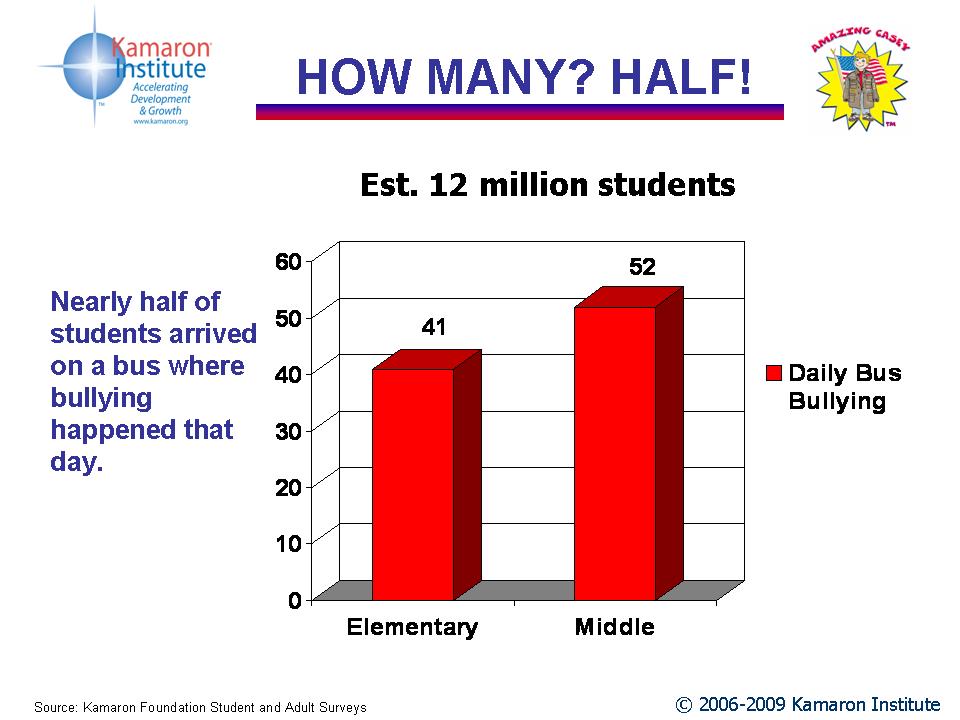|
|
Cyber Bullies Internet Bullying Data
|
|
Cyber Bullying incidents tracked at 6 percent in 2000 are now estimated in range of 18% of 42% of students in grades 4 through 8. 21% to 49% of students ts in grades 6 through 12 saying they have been bullied online.* Less than 20 percent tell their parents that they have been cyber bullying victims out of fear of loosing Internet access. It’s a cycle. More than half of students who are cyber bullyied also display cyber bullying behaviors. Teenagers tend to respond without thought of consequences. Cyber bullies sometimes leave their “electronic finger prints” behind. Electronic messages such as IM’s and emails leave "fingerprints" -- nine-digit numbers recorded with your ISP |
 Kids are safer if parents move computers from bedroom to family room |
 Internet bullying in 'tween' group to double by 2010 |
Tips: Cyber Bullying Preemption
|
Cyber Bullying Articles
Kamaron Institute does not endorse and is not responsible for the content of external sites.


